

Review: 2024 Ford Mustang Mach-E GT goes with Lightning
The Mach-E is Ford’s only dedicated electric vehicle, with no gasoline equivalent. Yet it won’t let you, or anyone driving near you, mistake it for anything but a member of the Mustang family.
On the 2024 Ford Mustang Mach-E GT, the design cues and prancing-horse logos still deal out an overstated hand of pony-car attitude. I reach over and select this model’s performance mode—called Unbridle, which doubles down on the impression—and an overdubbed combustion-synth soundtrack breaks the conversation like a record scratch.
I ask my drive partner: “Ya like horses?”
Mustang Mach-E is an EV original
The Mustang badge does indeed get the Mach-E some name recognition, while its best attributes have always stood starkly aside from the Mustang lineup.
With the exception of the Chevy Blazer EV and Equinox EV, all its rivals are strong departures from their ICE equivalents.
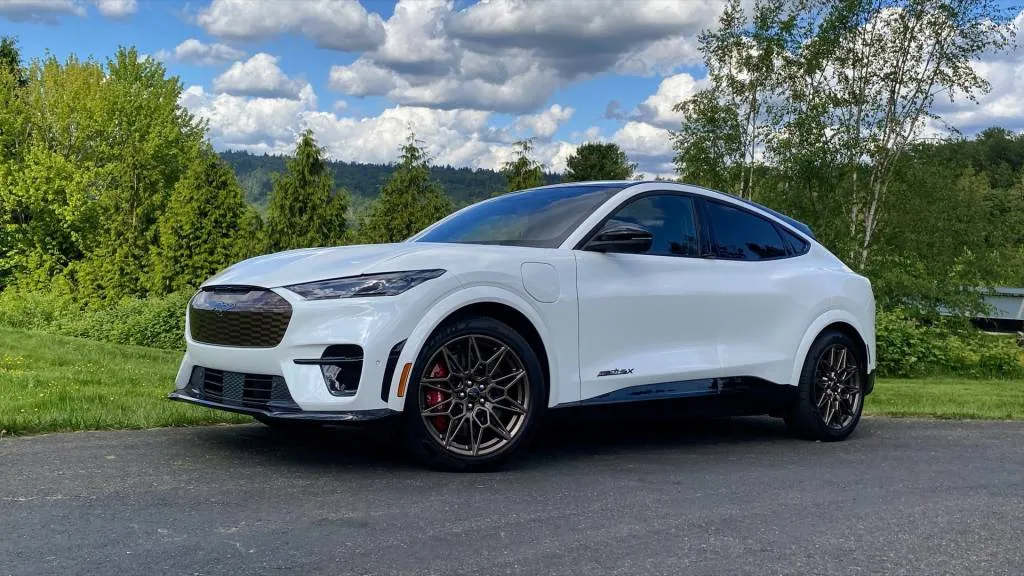
2024 Ford Mustang Mach-E GT
The Mach-E is one of the mainstream EV market’s originals—a leader in the cohort of electric compact crossover SUVs that have rakish rooflines and curvaceous sculpting meshing with futuristic cues and leading edge interfaces. When deliveries of the Mach-E started in late 2020, only the Tesla Model Y was being delivered, and the Hyundai Ioniq 5, Kia EV6, and Nissan Ariya hadn’t yet arrived.
While the Mach-E GT isn’t at all a track-focused model like the Hyundai Ioniq 5 N, a series of engineering changes and smart optimizations make this version an even better-driving EV for the backroads, as Green Car Reports recently experienced. Meanwhile, the 2024 Ford Mustang Mach-E Rally, tuned for dirt-track thrills, is the closed-circuit thriller instead, and we’ll have a first drive of that model soon on companion site Motor Authority.
Mach-E has good range, GT included
The 2024 Mach-E GT is a leader among performance-oriented crossovers with respect to range. It beats the Tesla Model Y Performance by a mile in official EPA ratings. It also beats the Kia EV6 GT and Hyundai Ioniq 5 N by a much more significant amount; those models are at 206 miles and 221 miles, respectively.
It’s not all in the name of efficiency; the Mach-E GT’s battery is indeed larger than the packs in all of those rivals. It comes with a 91-kwh (usable) Extended Range battery pack and a 280-mile EPA range rating. Mach-E Select and Premium models can also be had with a 72-kwh Standard Range pack providing 230 miles with all-wheel drive or 250 miles with rear-wheel drive.
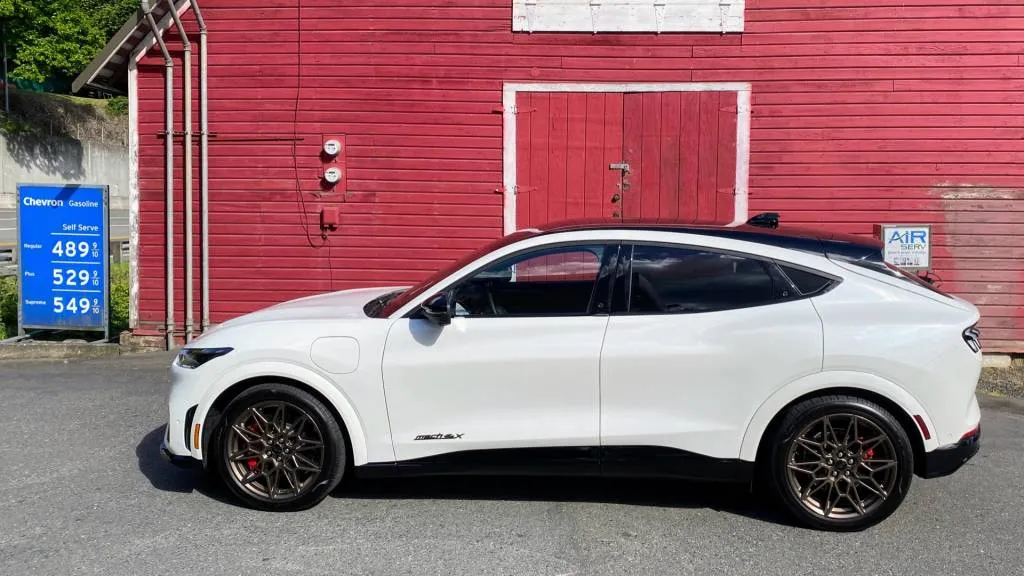
2024 Ford Mustang Mach-E GT
Outside of the GT, the Mach-E remains a standout for range with its Extended Range pack, the Mach-E can return up to 320 miles with rear-wheel drive, and it gets a 300-mile rating with all-wheel drive—better than the Ioniq 5 or EV6, albeit with the larger battery. All Mach-E models can now be charged on the Tesla Supercharger network, via a complimentary, Ford-provided NACS adapter plus the inclusion of that network in the aggregated locations of its FordPass charge-finding and route-planning app.
Versions of the Mach-E with the Standard Range pack have a completely different battery pack chemistry and configuration. In the smaller one there are 108 lithium-iron-phosphate (LFP) cells rather than the Extended Range version’s 376 cells.
From the vehicle’s trip computer, I observed 2.8 miles per kwh in a couple hours mixing freeway, fast-moving back roads, and urban traffic conditions, while using the climate control for best comfort (temps in the 60s) and driving without any heed to efficiency. That indicates a real-world range of around 250 miles.
Mach-E performance: Satisfying, smooth on back roads
The 2024 Mach-E GT makes 480 hp and 600 lb-ft of torque and can accelerate to 60 mph in 3.8 seconds. Opt for the $745 Performance Upgrade (fitted to my test car—$995 without a wheel and tire upgrade) and you bump the torque rating to 700 lb-ft and the 0-60 mph time down to 3.3 seconds. At that price, why not?
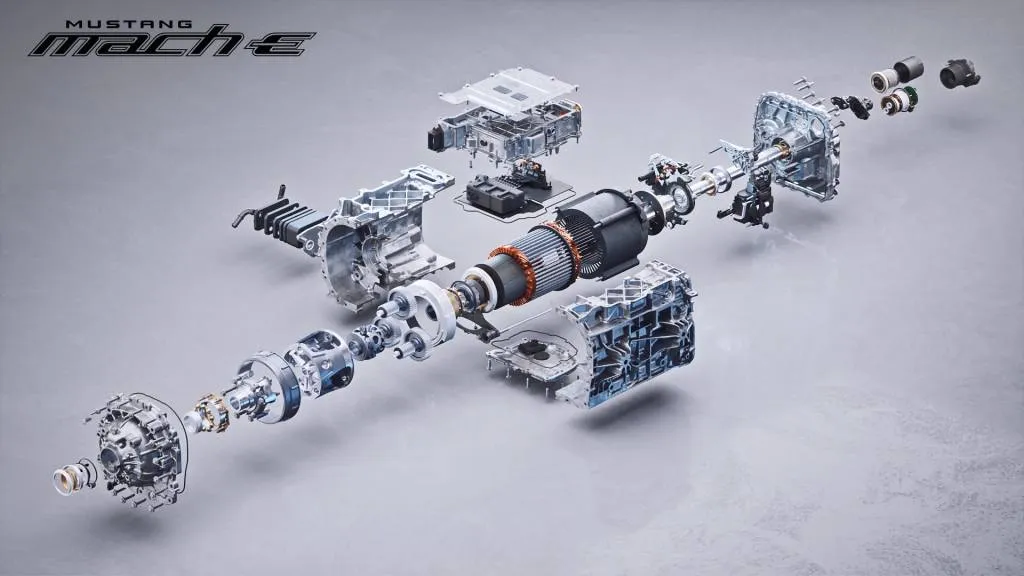
2024 Ford Mustang Mach-E near rear motor
When you get that upgrade, the 2024 Mach-E makes the most of a shift to a new, more powerful rear motor—the same Ford-made part number shared with the F-150 Lightning and a unit that Ford plans to scale up even more into future EVs.
For now Ford is only making the rear motor itself, while for the Mach-E it will continue to get the inverter for that motor, as well as front motors, from suppliers.
The Mach-E still doesn’t have a heat pump, but Ford has consolidated its three cooling circuits down to two primary circuits plus climate control. According to product development engineer and EV energy management expert Ling Gong, Ford also shifted the ratio to 9.7:1, versus the previous 9.0:1, to better match the characteristics of the new motor. And it switched out its wheels for aero wheels that collectively improve the model’s coefficient of drag by about 0.007.
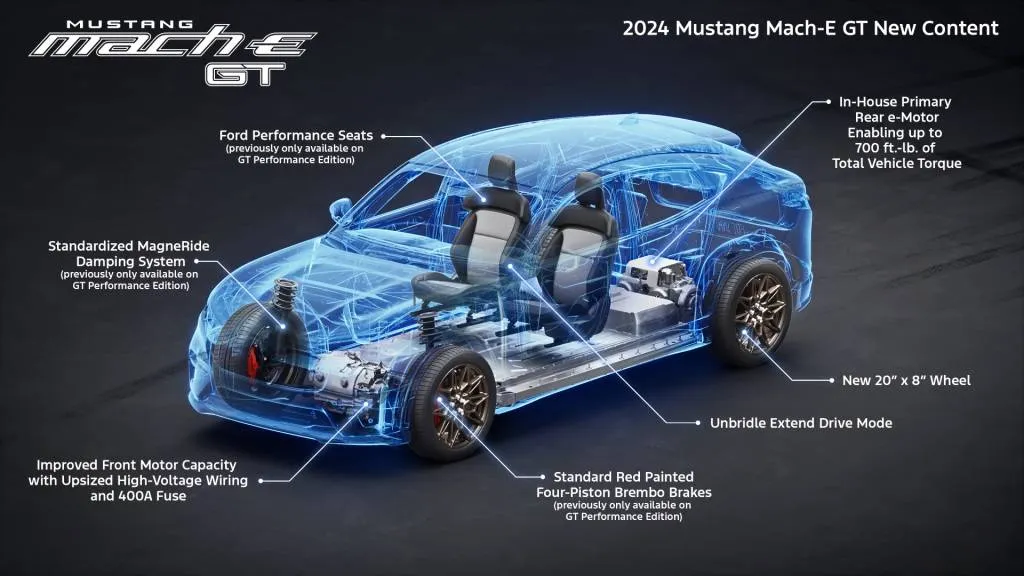
2024 Ford Mustang Mach-E changes
The propulsion sounds arguably undercut a lot of hard work that the development and engineering teams have continued to do in Mach-E refinement and sealing out wind and road noise as well as elements like gear whine. Turn the supplemental sound off, as you should, and the Mustang Mach-E GT now feels like it could wear a European luxury badge.
That sense of refinement is enabled partly by the magnetic damping system that’s now included in all GT versions, allowing different tuning across the Whisper, Engage, and Unbridle modes.
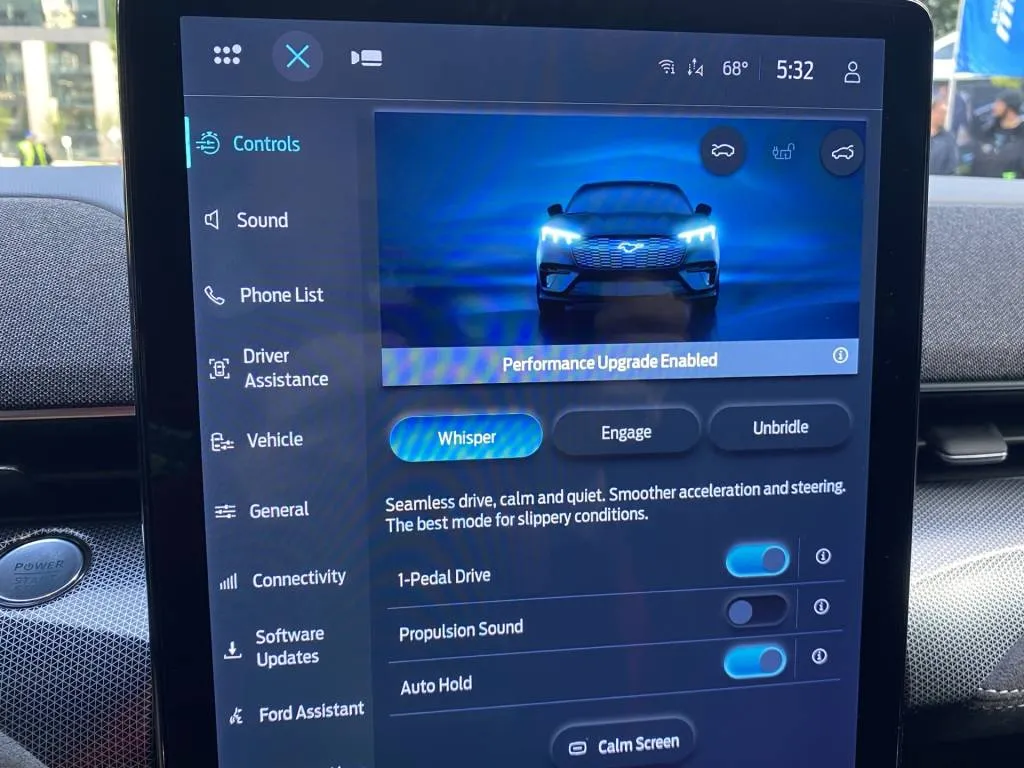
2024 Ford Mustang Mach-E GT
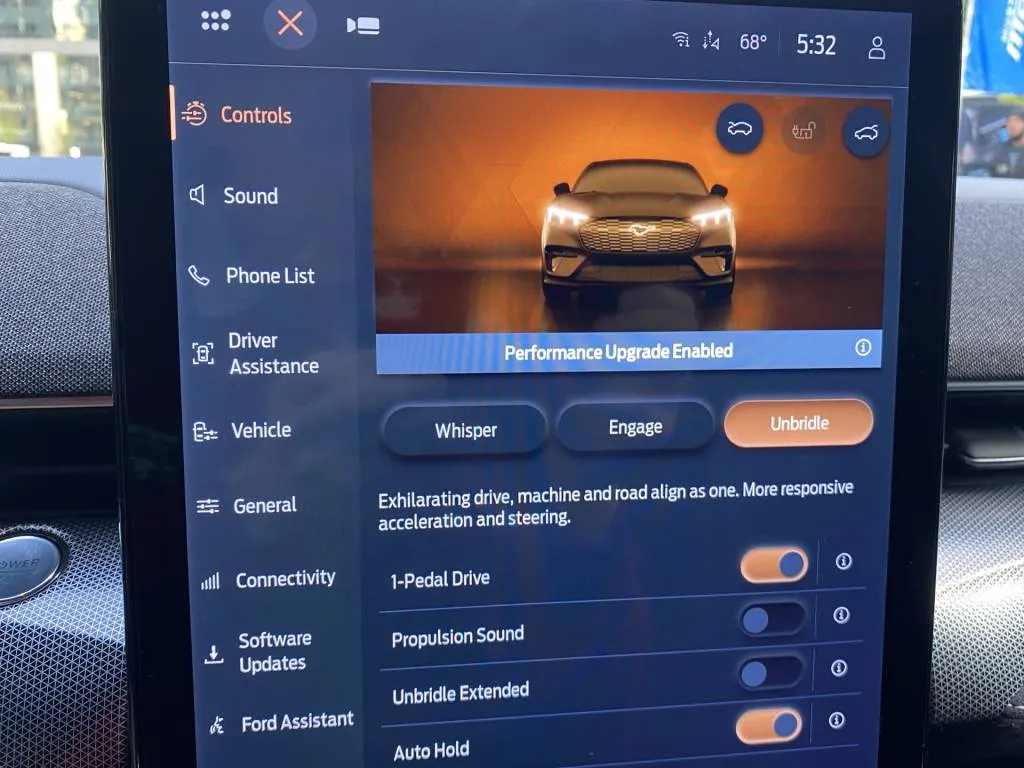
2024 Ford Mustang Mach-E GT
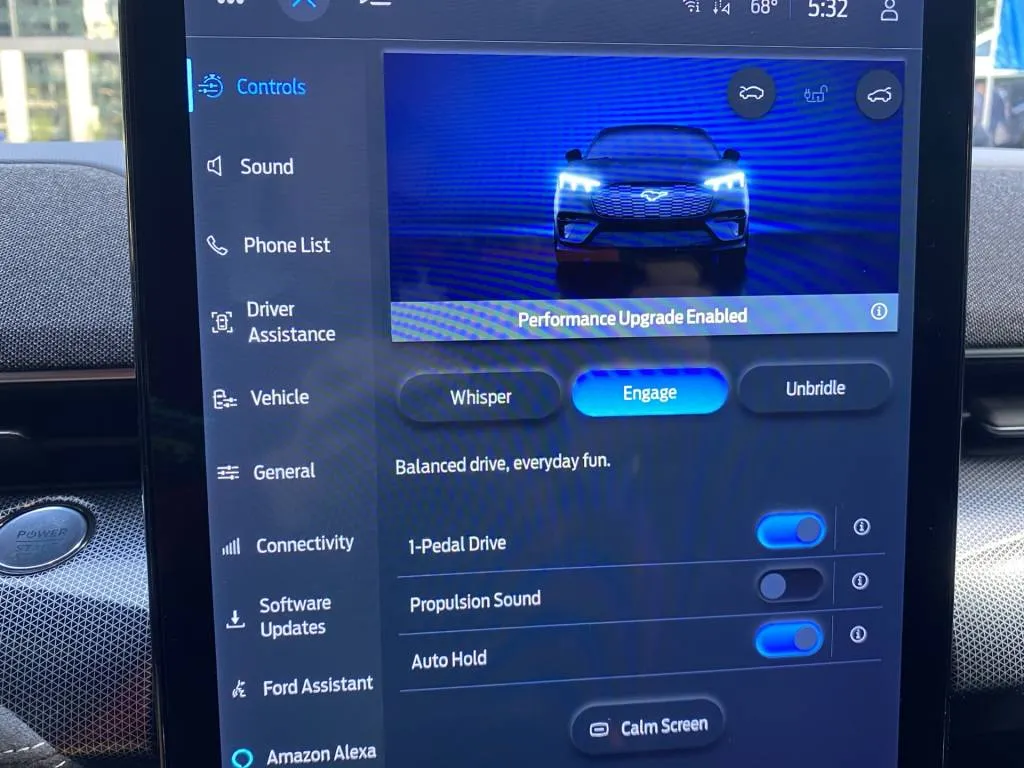
2024 Ford Mustang Mach-E GT
The Mach-E rides on a four-wheel independent suspension with struts in front and a multilink arrangement in back, both complemented with a hollow stabilizer bar.
All Mach-Es have four-wheel disc brakes. The GT gets larger discs, and the regenerative braking varies across those modes, too. There aren’t any steering wheel paddles, but a one-pedal driving mode ramps up regen so much that you might rarely need to press the brake pedal except the last few feet of a stop. The auto-hold mode in the Mach-E doesn’t offer a lot of subtlety when parking, so remember to turn it off if you just need to inch ahead into a parking space.
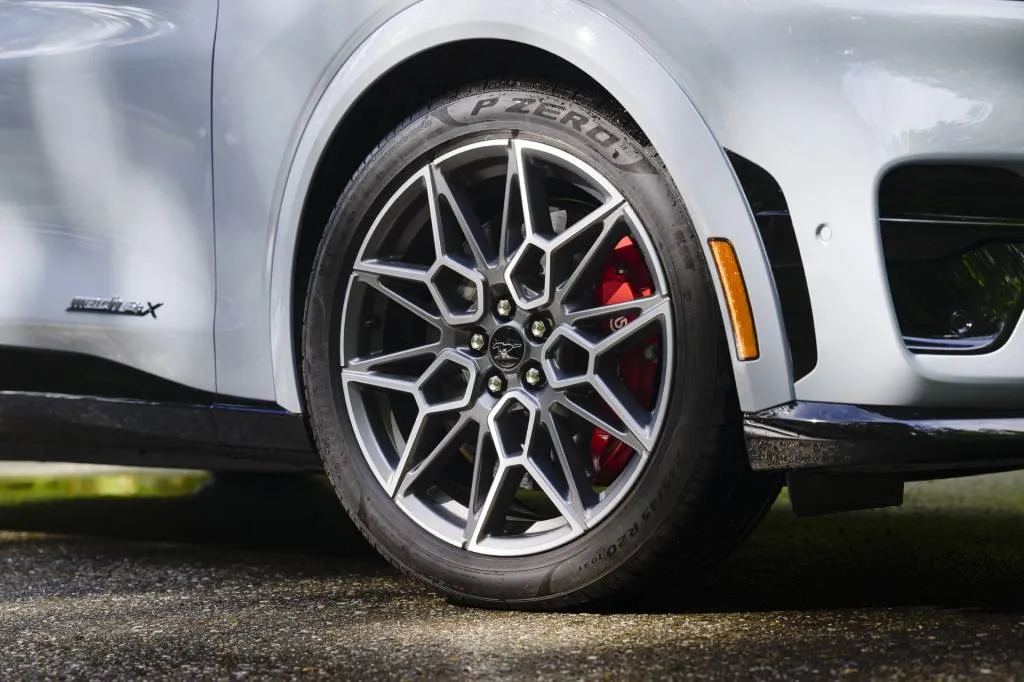
2024 Ford Mustang Mach-E GT
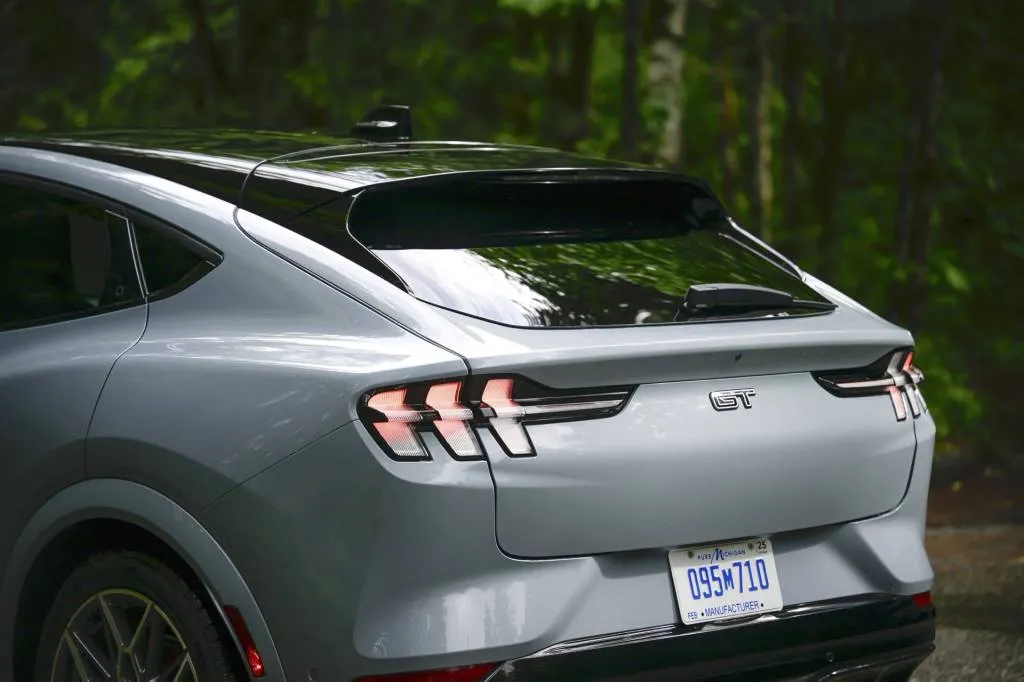
2024 Ford Mustang Mach-E GT
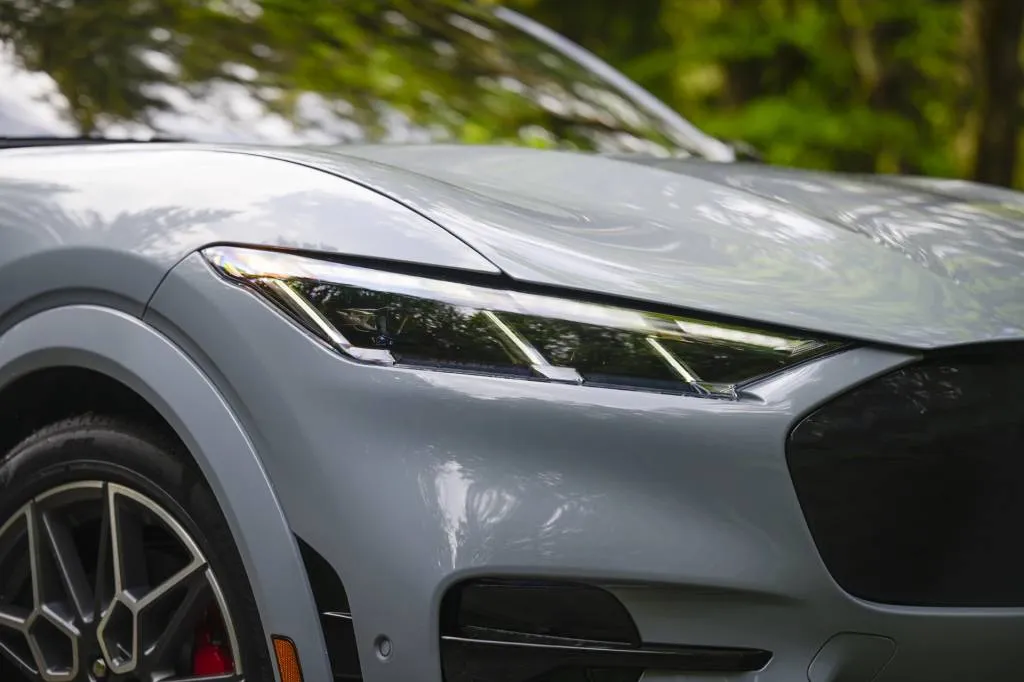
2024 Ford Mustang Mach-E GT
While the Mach-E does a great job masking all its weight the vast majority of the time, choppy back roads with heaved surfaces did underscore this model’s nearly 5,000 pounds (4,952) in GT guise. The magnetic damping appears to make a big difference to general cabin refinement as well.
The Mach-E’s packaging and cargo space haven’t changed at all, including reasonably good back seat space and a large frunk with a drain plug (tailgating time!). All GT models now include Ford Performance front seats that offer up great back support as well as thigh support without feeling too confining on the sides. Just as in other Mach-E versions, as a taller driver, I wished the hip point of these front seats could be lowered another inch or two—a choice that would also allow its roll center in handling to feel more natural.
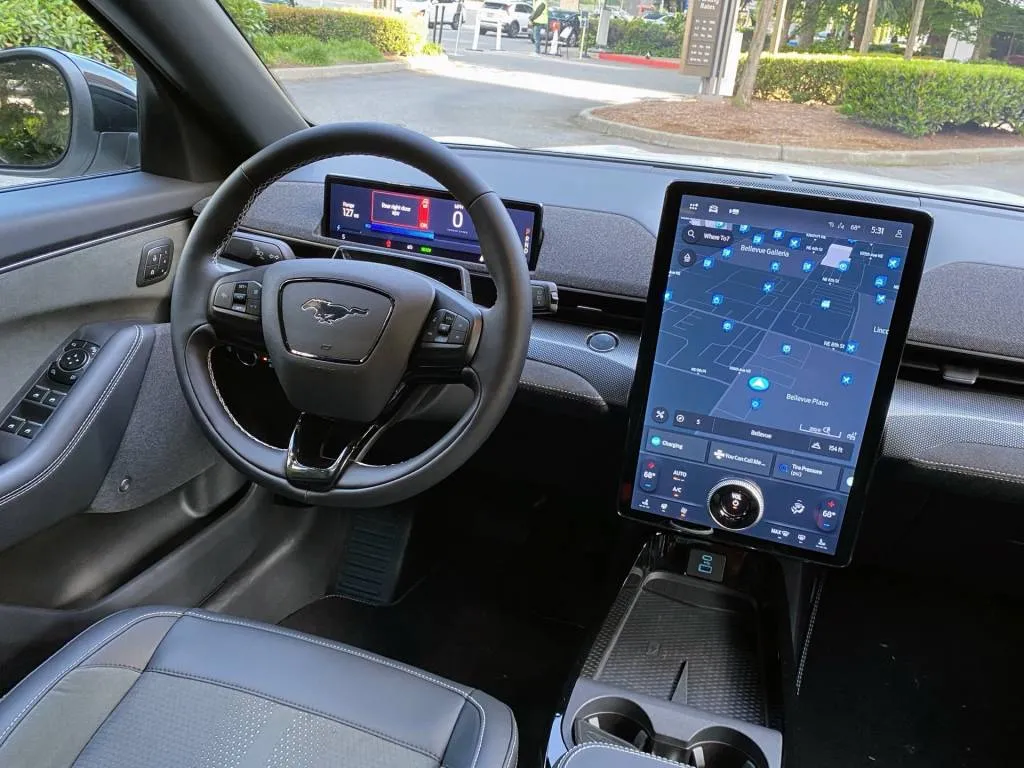
2024 Ford Mustang Mach-E GT

2024 Ford Mustang Mach-E GT
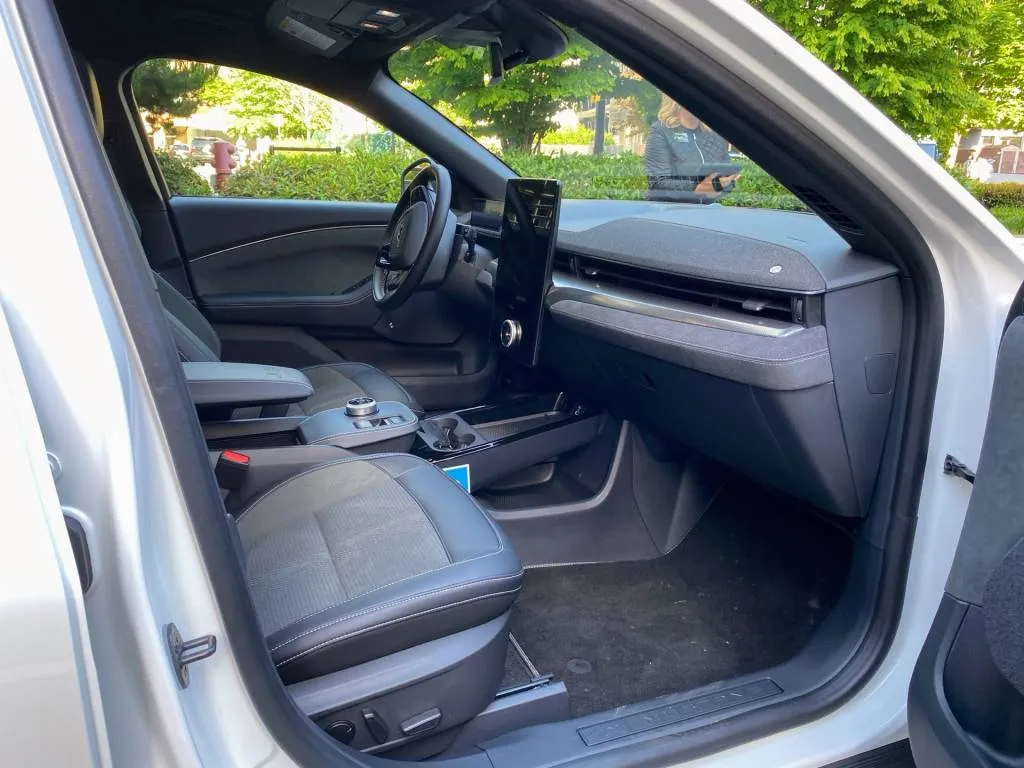
2024 Ford Mustang Mach-E GT
Mustang Mach-E features and options
The GT starts at $55,890, including destination, and it gets a whole lot of standard equipment. It carries over the Premium’s 10-speaker Bang & Olufsen premium sound system (including subwoofer), ambient cabin lighting, heated front seats, heated steering wheel, memory settings, and power tailgate, and it adds an aluminum instrument panel appliqué and accent stitching.
Ford’s BlueCruise driver-assist system, in its current iteration, costs $2,100 for three years and provides improved lane placement plus smoother automated lane changes—including multiple lanes as needed. Other options on my test vehicle included the panoramic fixed-glass roof and bronze-painted wheels, for a grand total around $61,000.

2024 Ford Mustang Mach-E GT
All Mustang Mach-E versions get an updated version of Ford’s Sync 4 infotainment system with a vertically oriented 15.5-inch capacitive touchscreen—nearly flat in its menu layout, which is a great thing—plus a reconfigurable 10.2-inch instrument screen, wireless phone charging, and front and rear USB ports.
Yes, the Mach-E still leans hard into its pony-car lineage; but love it or hate it, it amounts to an engaging personality and a good EV. All those horses in and out of the vehicle made sure of it.
Ford paid for travel and lodging for Green Car Reports to bring you this firsthand report.
Add a comment Cancel reply
Comments (0)
Related posts


Electric SUVs: Top 6 Models for Family Trips











